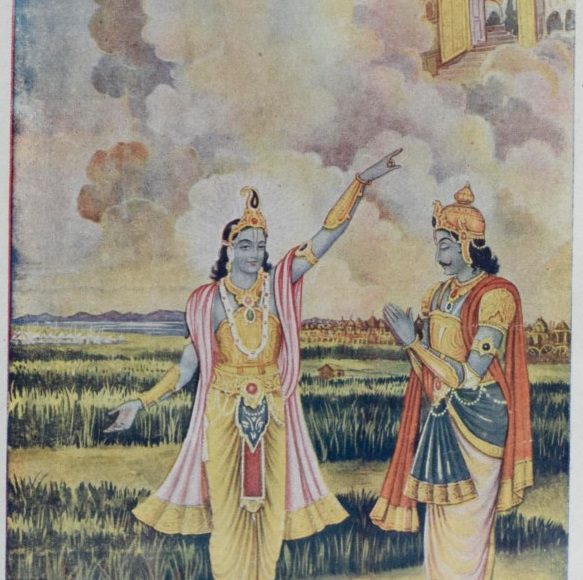PITAMBAR PIR My hajj (pilgrimage) is performed on the bank of Gomati, where lives my Pitambar Pir (the Preceptor Krishna who wears yellow clothes) (Asa Kabir_ p. 4J8) Pitambar Pir and Pit Basan (see p. 1402) are the two epithets used for Krishna, who is said to be the wearer of yellow garments
References :
1. Kohli,Surindar Singh ed,Dictionary of Mythological References in Guru Granth Sahib 1993
Pitambar Pir is an epithet used to refer to Lord Krishna in Hindu mythology. The term “Pitambar” translates to “one who wears yellow garments,” symbolizing Krishna’s iconic attire. Krishna’s yellow robes are deeply symbolic, representing purity, divinity, and the principle of sacrifice as described in the Vedas.
Key Aspects of Pitambar Pir:
Symbolism of Yellow Garments:
- The yellow color, associated with fire and yajna (sacrifice), signifies the cosmic principle of giving and receiving. Krishna’s yellow robes highlight his role as the Yajna Purusha, the divine recipient of all offerings.
Cultural and Spiritual Significance:
- Krishna’s depiction as Pitambar Pir emphasizes his divine qualities and his connection to the Vedic traditions. The yellow garments are also seen as a representation of spiritual enlightenment and cosmic balance.
Mention in Sikh Texts:
- Interestingly, the term “Pitambar Pir” is also mentioned in Sikh literature, where it refers to Krishna as a divine preceptor and a figure of reverence.
This epithet beautifully encapsulates Krishna’s divine persona and his role as a guide and protector in Hindu mythology.



